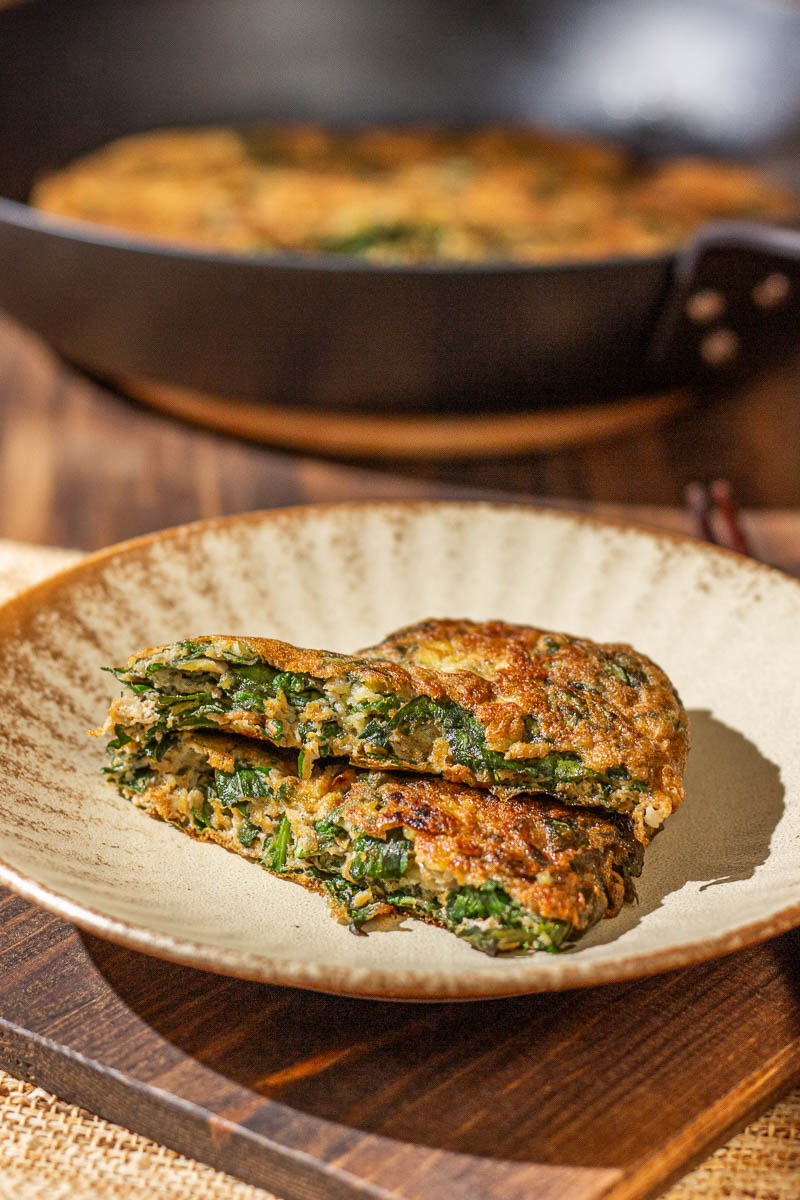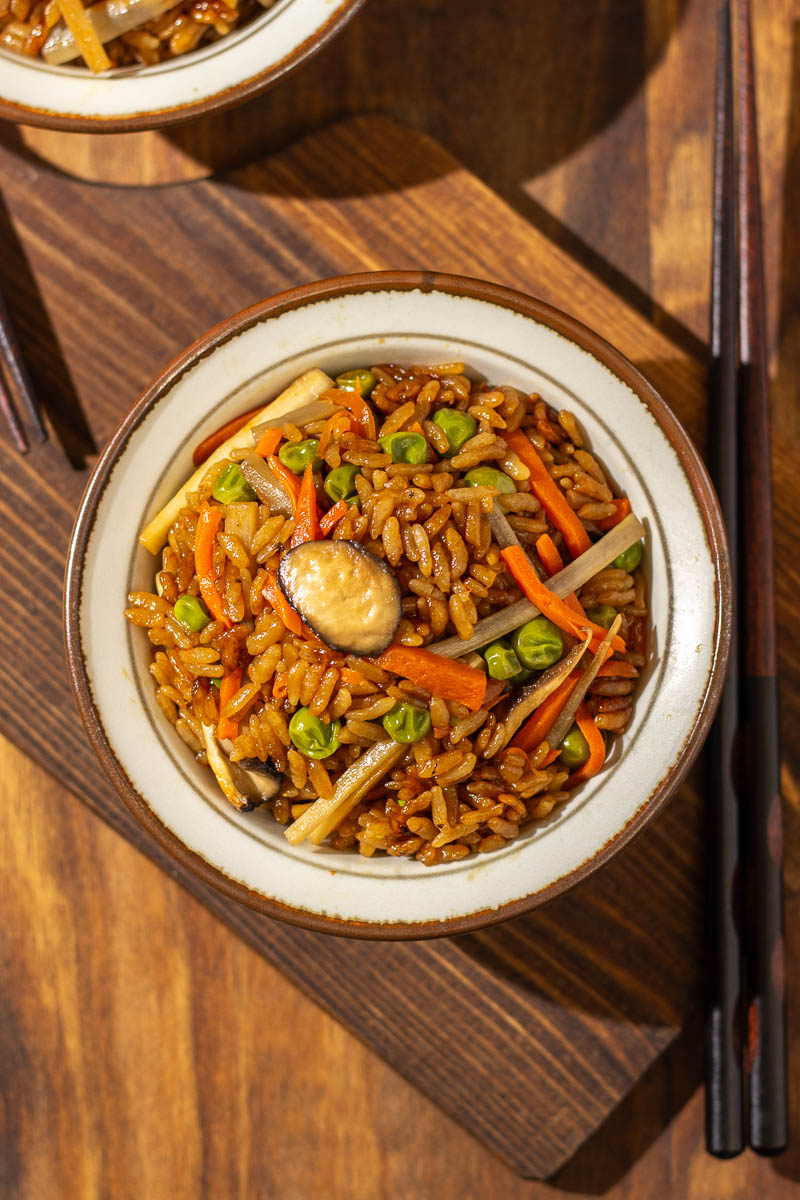Garlic-Chili Oil Kissed Chinese Chives with Dried Tofu Noodles (熗拌韭菜)
Kissed with sizzling garlic-chili oil, this Chinese Garlic Chives with Dried Tofu Noodles is bold, savory, and irresistibly aromatic. 🧄🌶️⚡ This tasty dish can be enjoyed hot or served cold as a delicious appetizer.

Would You Like To Save This?
Garlic Chives in Chinese
Garlic chives are called Jiǔ Cài (韭菜) in Chinese.
Where do I even begin with garlic chives? They are super fragrant, available all year round at Asian grocery stores, and can be made into many yummy dishes that go well with rice or other carbs (mmm, dumplings!).
Garlic chives, also known as Chinese chives, are in the same genus family as garlic (i.e., Allium), have a strong onion-y, garlic-y smell, and, to my knowledge, have nothing to do with garlic otherwise.
Interestingly, due to their pungency, garlic chives are one of the Five Pungent Roots practitioners in certain branches of Buddhism cannot eat because these plants are believed to induce and increase undesirable emotions like anger or sexual desire (the other four are onions, garlic, leeks, scallions or green onions, and shallots).
With not just garlic chives–but also quite a few garlic cloves–this recipe is *definitely* not for any serious Buddhist practitioners! 🧄
Ingredients You’ll Need

- Garlic Chives: The star ingredient of the dish!
- Dried Tofu Noodles: Adds a different texture and protein to the dish! They are a regular in Chinese appetizers and are often mixed with a vinegary sauce, as an tangy appetizer, for hot days or as a prelude for hot main entrees.
- Garlic Cloves: The more the merrier! Prepping garlic is not an enjoyable task for me (sticky!), so five will do.
- Dried Chili Peppers: They not only add a pop of color, they also add a layer of aroma when activated by hot oil! They are usually not spicy at all.
- Optional: If you do not want to risk any spice at all, you can omit this.
- Peanut Oil: Used to activate the minced garlic and chopped dried chili peppers, and add a layer of nutty aroma and taste!
- Substitution: You can use soybean, safflower, rice bran, or avocado oil, as they all have a similar high smoking point as peanut oil (450℉ or 230℃), though you might not get the same aroma and taste.
- Sesame Oil: Adds a layer of nutty aroma and taste.
- Sugar: Adding a bit of sugar rounds out the saltiness from the soy sauce and the acidity from the vinegar.
- Light Soy Sauce: Flavors the dish and adds a layer of aroma.
- Substitution: If you really don’t have Chinese soy sauce at hand, Japanese soy sauces can be really good substitutes as they are excellent in cold dishes. Japanese soy sauces tend to have less sodium than Chinese ones, so you might have to add more than what the recipe calls for or further season the dish with salt.
- ZhenJiang Vinegar: This black vinegar has a more pronounced vinegar aroma than a vinegar taste. It is not as acidic as Western balsamic vinegars; it is much lighter and rounder in taste.
- Substitution: Not recommended.
- Salt: Use for blanching.
Re: Garlic Chives
I understand that vegetables sold at different Asian supermarkets come in different sizes, and it’s not like everyone has a food scale at home to weigh out exactly how much is needed in a certain recipe (or even if you did, you might not feel like getting it out cause it’s so much work?).
So, on that note, I developed a rule of thumb (literally!) for myself, and hopefully it will work for you, too!

My Rules of Thumb
To eyeball the weight of garlic chives without a scale, here’s my quick trick:
(Disclaimer: I have an average-sized hand but longer-than-average fingers.)
- If my thumb easily surpasses my middle finger when holding a bunch of garlic chives (like in the images above), then the bunch usually comes out to be about 60 grams ± 10 grams, which is about what this recipe (1x) calls for.
Did this method work for you? Let me know whether this trick worked for you (or not) in the comments or DM me on Instagram @AtypicalFare!
Re: Dried Tofu Noodles

Dried tofu noodles are made from tofu that has been pressed and pressed (reduced water content), baked, and then sliced.
It’s an ingredient with many (confusing) English names–soy tofu slices, tofu strips, shredded tofu, noodle-style tofu, etc.
In Taiwan, dried tofu noodles are most commonly referred to as Gān Sī (干絲/干丝), or “dried silk”. In China, they are referred to as Dòu Fǔ Sī (豆腐絲/豆腐丝), or “tofu silk”.
You can find them in the refrigerated aisle near tofu in Asian supermarkets.
- Each packet comes with two clusters of dried tofu noodles, and this recipe (1x) calls for one cluster.
- If you prefer the metric system, you can toggle “Unit Conversion” in the Recipe Card below to find each ingredient’s metric measurements.
How to Make This Recipe: A Visual Guide
Here is a quick recipe run down and some visual instructions! The full instructions with ingredients are in the Recipe Card below.

- 1: Chop the garlic chives.
- 2: Chop the dried tofu noodles.
- 3: Cut the dried chili peppers.
- 4: Blanch the garlic chives.

- 5: Take the garlic chives out to drain.
- 6: Add salt to the blanching water.
- 7: Blanch the dried tofu noodles.
- 8: Take the noodles out to drain.

- 9: Place the drained garlic chives and dried tofu noodles in a mixing bowl and add sesame oil.
- 10: Add sugar.
- 11: Add light soy sauce.
- 12: Add ZhenJiang vinegar.

- 13: Mix well! Mix, mix, mix.
- 14: Place the minced or crushed garlic and cut dried chili peppers on top.
- 15: Pour hot oil on top to activate the garlic and chili peppers! It will be sizzling!
- 16: Serve and enjoy!


Garlic-Chili Oil Kissed Chinese Chives with Dried Tofu Noodles
Ingredients
From the Fresh Produce Section
- 1 bunch garlic chives chop into 1 inch (or 2.5-cm) long sections
- 5 cloves garlic crushed or minced
From the Refrigerated Aisle
- 1 bunch dried tofu noodles chop into 1 inch (or 2.5-cm) long sections
From the Non-Refrigerated Aisle
- 4 pieces dried chili peppers sliced or cut into thin strips
For Blanching
- 32 oz water
- 1 tsp salt
For Cooking
- 2 tablespoons peanut oil
For the Sauce
- 1 tablespoon light soy sauce
- ¾ tablespoon ZhenJiang black vinegar
- ½ tablespoon sesame oil
- ¼ teaspoon white sugar
Equipment
- 1 soup pot for blanching
- 1 spider strainer or fine mesh skimmer
- 1 small sauce pot (or milk warmer pot) for heating oil
Instructions
To Prepare the Fresh Produce
- Wash 1 bunch garlic chives and cut them into small sections, about 1 inch (or 2.5 cm) long.
- Take 1 bunch dried tofu noodles out of the package, rinse, and cut them into similar lengths as the garlic chives.
- Cut 4 pieces dried chili peppers into thin strips (I use a pair of food-grade scissors).
- Mince 5 cloves garlic or use a garlic crusher.
To Blanch the Chives & Dried Tofu Noodles (See Notes)
- Both the garlic chives and the dried tofu noodles need to be blanched, so bring a pot of 32 oz water to boil on medium-high heat.
- Once the water boils, add the garlic chives and blanch them for about 15 seconds, until the green turns vibrant.
- Take them out and set them aside to cool, so that we can use our hands to squeeze out any excess water later.
- Then, add 1 tsp salt to the same pot of water and the dried tofu noodles; wait until the water boils again.
- Take the dried tofu noodles out and drain any excess water.
- When the garlic chives are cool enough to be handled, manually squeeze out any excess water.
To Heat Oil (For Activating the Garlic & Dried Chili Peppers)
- In a small pot (like a milk warmer pot), heat 2 tablespoons peanut oil on medium-high heat until just smoking, or use the chopstick method (when you stick a chopstick in, there are not just a few but lots of bubbles and you can hear bubbling sounds when moving the chopstick around).
- While waiting for the oil to be heated, assemble the prepared ingredients.
To Prepare & Assemble the Dish
- Place the garlic chives and dried tofu noodles in a big enough mixing bowl, add ½ tablespoon sesame oil, ¼ teaspoon white sugar, 1 tablespoon light soy sauce, and ¾ tablespoon ZhenJiang black vinegar. Mix well.
- Place the garlic and dried chili peppers on top of the garlic chives and dried tofu noodles.
- When the oil is hot enough, turn off the heat and pour the hot oil on top of the garlic and dried chili peppers to activate them.
- Mix everything together–serve and enjoy!
For Storage
- Transfer any leftover to an airtight container and store it in the refrigerator for up to 3 days.
Would You Like To Save This?
Notes
Nutrition
Nutritional information is calculated to the best of my knowledge using MyFitnessPal (which has a more comprehensive ingredient database that includes Asian food items) and is an estimate. Actual nutrition will vary based on the cooking method and specific ingredients used.








Great recepie for Tofu lovers !
I love Tofu so much and this is great for Tofu Lovers, another great choice !
Great recipe !